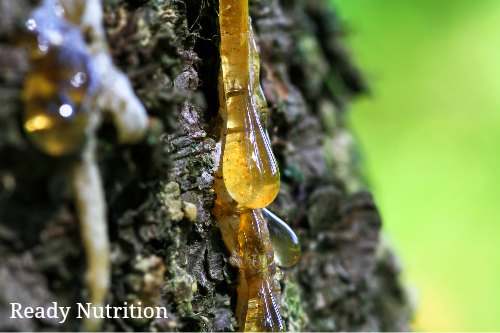Pine resin has many uses, especially in a survival situation. Read more on how to collect, and use of pine resin. It has more uses than you think!
There are many uses for the resin that can be collected from pine trees. Just what is the resin and how does the pine tree use it? Well, it’s a substance that helps protect the tree from funguses and disease, as it is antimicrobial in nature. Resin (commonly referred to as “sap”) also enables the tree to hold in water and protect it in times of drought. It is used by the tree as a sort of natural “self-patching” kit to help it close a wound within it, such as a deep gouge in the bark.
People have been using resin for a long time. It can be used to make wood stain and varnish. Yeah, I know, that’s really exciting. So, let’s cut to the chase and list what it can do.
- First Aid: The sap is antimicrobial and anti-inflammatory. A hardened piece can be softened with heat and applied to a wound to help stop bleeding. If you chew it (softer pieces), it can treat sore throats and help with a cold.
- For fire and light: the resin burns, and can be used to make torches, fire starters, and makeshift candles. Read more on how to acquire a supply of fat wood for lighting fires in a snap.
- Glue: for patching holes and tears…also in skin, akin to super-glue on a cut (double use as first-aid there). You can mount heads on blowgun-darts, spears, and arrows with it.
There’s plenty to go around. You can gather it in the woods both hardened and soft. Be sure and use a container, preferably glass and not plastic to carry your resin. People harvest it by cutting v-shaped notches into the bark in rows parallel to one another. The resin then collects in the lowest one…a bucket or vessel is needed to catch it. Don’t go out and destroy or hurt live trees unless it’s a genuine survival situation. If it kills you to think about it, know that those who harvest it do so for 20 years or more with no overall ill effects on the tree.
Fossilized resin is known as amber and has been fashioned into jewelry. Many times, the amber trapped animals in it when it was still soft resin, such as bees, ants, and spiders…and they ended up being perfectly preserved…of great historical and scientific value. Pine tar, pitch, rosin, and turpentine can be made from pine tree resin, and although they are beyond the scope of this article, they are worth mentioning for your further research.

I’ve written articles on pine pollen and pine needle tea in the past. As you can see, the pine trees have many uses besides just building cabins and as fuel for fires that don’t immediately jump out at you. Learn to find and gather the resin and try to practice using it in the ways we covered here. This is good for your ongoing survival training and further sustaining yourself when the going gets tough and the only resources you have are what information you carry in your head and the skills to make it happen. JJ out!
source : Jeremiah Johnson



